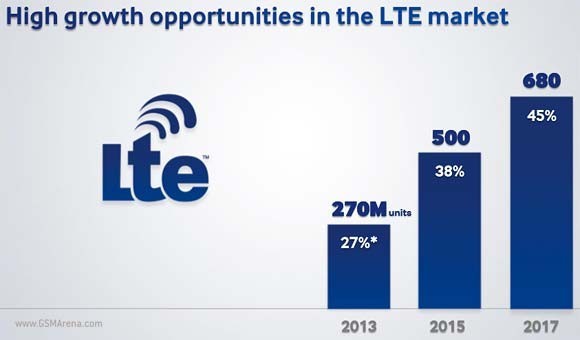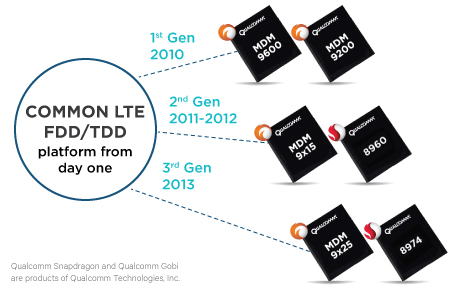2014 Mobile World Congress (Mobile World Congress, hereinafter referred to as the MWC) in Barcelona, Spain, the world’s leading mobile products manufacturers have come up with special skill. However, in addition to increasing media exposure outside of their major technology, mobile chip giant also did not forget to take the opportunity to compete for Chinese 4G mobile network market.
Because including China Mobile, the Chinese mobile operators are racing to upgrade to 4G LTE mobile network. The smart phones main component manufacturers Qualcomm, Intel, MediaTek, Marvell and Broadcom, compete for the world’s largest mobile market on the occasion of MWC.
Chinese mobile operator’s evolution of LTE technology allows Intel and other chip makers saw a great opportunity to push top LTE chip maker Qualcomm off the altar. The MWC Conference will undoubtedly become a crucial battleground. There are 70 Chinese companies exhibiting MWC Assembly last year, and this year the figure further increased to 99. Therefore, MWC Assembly provides the perfect stage for the global mobile chip manufacturers to showcase their best products.
Intel and Qualcomm chip manufacturers will show the first new microchip-based LTE technology products in Barcelona, many of these chip consumes less power, but the price is also lower than the previous cutting-edge products. This makes them ideal chip products for low-end smartphones in China and other emerging markets.
Qualcomm even designed for MWC Assembly developed a Chinese version of the smart phone applications, and posted in the booth scene identification with Chinese translation. Cristiano, executive vice president of Qualcomm • Amon (Cristiano Amon) said: “We will show a lot of products designed to attract Chinese enterprises and products on LTE technology Qualcomm LTE technology and aware of emerging market consumers migrate to smart phones. the hidden huge opportunity. ”
LTE chip demand surge
With the advantage of early technology, Qualcomm has been the main producer for LTE smartphone chip market in the past four years. And more and more countries have begun to adopt LTE network technology which also enables LTE chip demand surge.
MediaTek chief marketing officer Johan Lodenius, said: “Qualcomm is very good at developing LTE technology chips, however, almost all of the world’s mobile operators are looking for an alternative vendor of LTE chips in our favor. They don’t want to outsource to individual Qualcomm. ”
Intel, MediaTek, Broadcom and Qualcomm’s other competitors are invariably hyping their new exhibition site in MWC Barcelona, LTE chip products coming soon, however, very few of which can be launched in a variety of smart phones applications this week.
Headquartered in Santa Clara, California, chip maker Marvell has achieved some success; it has been applied in LTE accessories designed for the Chinese market on the development of several upcoming low-power smart phones.
Adjustment chip strategy
On Monday, Intel announced a new LTE chip, and is working with major mobile operators to start testing the chip. Intel marketing director Julie • Corpus Noel said the new LTE chip will be allocated to in the production of mobile phones in late 2014. She said: “LTE chip on the market on how to apply to the overwhelming rumors on the phone and we’ve effectively launched its own chips for our products that we have made significant improvements …”
Like other chip makers, Intel has also restructured the chip strategy, started paying more for the price below $ 300 smart phone product development, while reducing the degree of concern for the high-end smart phone accessories.
According to the UK technology market research, firm ARM Holdings published statistics show that as of 2018, the global high-end smart phone shipments are expected the annual growth rate of just under 4%; while mid-range and entry-level smartphone shipments are expected to annual growth rate were as high as 14% and 17%.
Qualcomm announced the launch of two mobile chips using LTE technology this week, and consumer markets target at China. A Qualcomm spokeswoman said, the world’s leading mobile phone manufacturers will launch 10 or more devices with Qualcomm’s new chip.
Even Microsoft is also expanding its influence in the Chinese mobile phone market. Microsoft announced the launch of new reference design projects, designed to facilitate the rapid introduction of mobile phone manufacturers using Qualcomm chips Windows smartphones.


